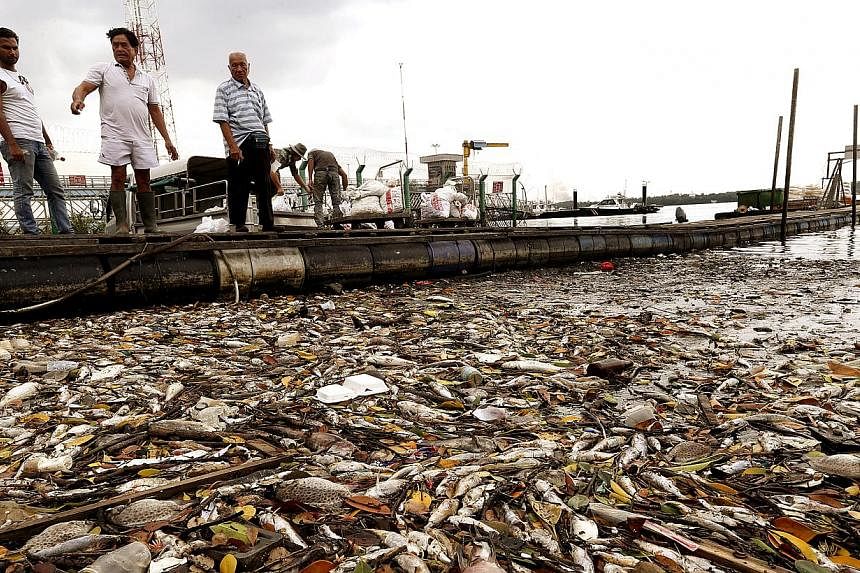A strong, pungent smell would have been the first thing to hit visitors to Lim Chu Kang jetty yesterday, as hundreds of dead fish washed up along its shores.
Cleaners were seen carrying bags of carcasses, which included big and small species such as mullet and catfish, while surprised passers-by watched.
Dead fish were also seen at Kranji Reservoir Park and Sungei Buloh Wetland Reserve.
Several Lim Chu Kang fish farms reported losing part of their stock overnight from the latest spate of mass fish deaths, which first hit the eastern region of Singapore two Saturdays ago.
Fish farmer Ong Kim Pit, 65, said his fish started dying at his Lim Chu Kang farm at around 9pm last Friday. More than 60,000 fish were lost, he added. He put their value at $10,000.
Most were baby mullet fish about 2.5cm to 5cm long. "It came very quickly. My fish were jumping and jumping and then they died within minutes," said Mr Ong. "I don't know why."
Another farmer, Mr Ng Chuan Huat, said he lost about 140,000 baby mullet at around the same time.
"Last year, I gave the fish oxygen and they were OK. This year, I aerated the waters but it didn't help," said the 61-year-old whose farm produces 51 tonnes of fish annually.
In response to queries regarding the latest incident, the Agri-Food and Veterinary Authority (AVA) said it is keeping daily tabs on the situation at the Lim Chu Kang fish farming areas in the West Johor Straits. There are 52 fish farms along this strait.
"We have detected elevated plankton levels in the area recently and alerted farmers on Feb 25 on the necessary precautions they should take," said a spokesman. "While a few farms have reported mortalities, the rest of the farms are largely unaffected."
On Feb 28, a wave of plankton bloom wiped out almost all fish stock at several Changi farms.
The AVA said that as of last Wednesday, the bloom had killed an estimated 500 to 600 tonnes of fish after affecting 55 out of 63 fish farms along the East Johor Straits.
Its preliminary findings showed elevated levels of Karlodinium veneficum in seawater samples which has been associated with fish kills worldwide, said the AVA. Fish that were affected include groupers, threadfin, golden trevally, rabbitfish, snapper, seabass and pompano.
Plankton blooms can be deadly as they suck oxygen from the water, suffocating other marine life. They are caused by factors such as warmer weather and a neap tide, when the high tide is at its lowest.
A similar wave around the same time last year affected 53 farms at both the East and West Johor straits, near Lim Chu Kang. About 500 tonnes of fish died.
A tired Mr Ong told The Sunday Times that he had spent about three hours cleaning up yesterday morning.
The farmer of two decades, who also rears milkfish which he sells to fish suppliers, said AVA officers came to investigate the incident, asking him how many of his fish died.
"Something about the waters is different. In the past, it used to be the lack of oxygen which I could do something about. But now, I don't know what's wrong," said Mr Ong. "What to do? When it happens, it happens."
Quick and sudden
"It came very quickly. My fish were jumping and jumping and then they died within minutes."
Fish farmer ONG KIM PIT, 65. His fish, mostly baby mullet fish about 2.5cm to 5cm long, started dying at his Lim Chu Kang farm at 9pm last Friday. More than 60,000 fish - with a value of $10,000 - were lost.


